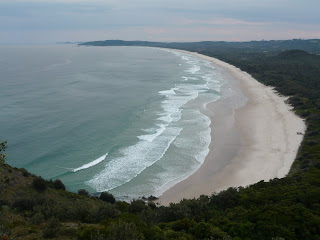Wednesday August 31st
Today is officially the last day of Australian winter, tomorrow is the first day of spring!
We had a fairly early start, as we had to be packed and breakfasted and in the bus by 8 a.m. We drove first to Brisbane
We were able to appreciate some of Brisbane Brisbane London
North of Brisbane, the pasture land gave way to forest, pine plantations first, then eucalyptus forest. After a late lunch, we turned off the main highway and made for Rainbow Beach
Once we had arrived and settled into our rooms, we were taken for a guided walk to a view point at a well known natural phenomenon called Carlo’s sandblow.
The sand dunes round here were created at the same time as the Sahara Desert Rainbow Beach Rainbow
Then we walked back to get ready for supper. I have no 3G connection for the iPad here, and the wireless connection for Paul's laptop is agonisingly slow, so I haven't put in many pictures.


















































